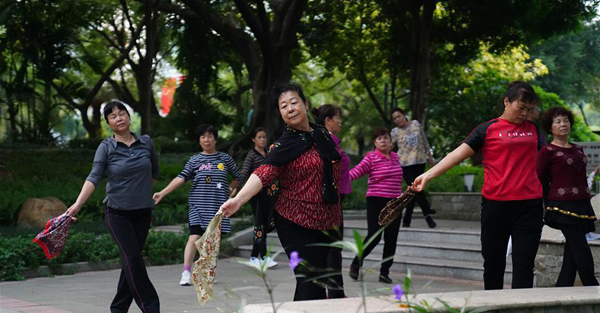
BEIJING — Floods this summer caused havoc in many areas in South China, yet some pilot sponge cities successfully made their escape from severe waterlogging.
In the city of Nanning, South China's Guangxi Zhuang autonomous region, one of the first group of selected cities for sponge city construction, its Nanhu Park is a witness of change.
Surrounded by hills, with rivers flowing through the city proper, the regional capital city used to have a rough time during rainy seasons.
"There was a time when we would lose trees after the soil was washed away by heavy rains, and then the muddy water would flow everywhere on the road," said Huang Miaoni, an environmental engineer of the park.
In 2015, a project was launched to lay about 8.17 km of permeable asphalt pavement around the central lake in the park. A cycle was formed as the rainwater the pavement absorbed would later be used to irrigate the plants.
In the same year, the country launched a plan to build sponge cities, selecting the first group of 16 cities, including Nanning and southwestern municipality of Chongqing. In 2016, the country unveiled the second group of 14 pilot cities.
According to a national guideline, through the sponge city construction program, 70 percent of rainfall will be absorbed and utilized locally. By 2020, more than 20 percent of urban built-up areas will meet the target, and by 2030, the proportion will be 80 percent or more.
Nanning has invested more than 11 billion yuan ($1.62 billion) in sponge city construction. According to the plan of the autonomous region, sponge city areas will account for more than 20 percent of urban built-up areas of cities across the region by the end of this year.
By January this year, Chongqing had completed the construction of 42.1 sq km of sponge city areas.
"The rainwater used to flow through drainage channels into the Yangtze and Jialing rivers, and impurities and pollutants carried by rainwater would cause river pollution," said Wang Jumeng, chairman of Chongqing Yuelai Investment Group Co Ltd, developer and operator of Yuelai Convention and Exhibition City, an 18.67-sq-km zone in the municipality's sponge construction program.
"Now, those shallow trenches with plants we have built will filter rainwater first, greatly reducing the burden on the river," Wang said.
The sponge city construction projects in different cities have brought tangible benefits to local residents, with polluted urban rivers cleaned, waterlogging reduced in rainy seasons and greening areas increased.
To better promote the sponge city program, Chinese authorities have been exploring to apply the public-private partnership (PPP) model, a collaborative investment model between government and private companies.
Besides greatly relieving the financial pressure, the model has also played a positive role in the management of sponge city areas, according to an official of the housing and urban-rural development bureau of Jinan, capital of East China's Shandong province.




